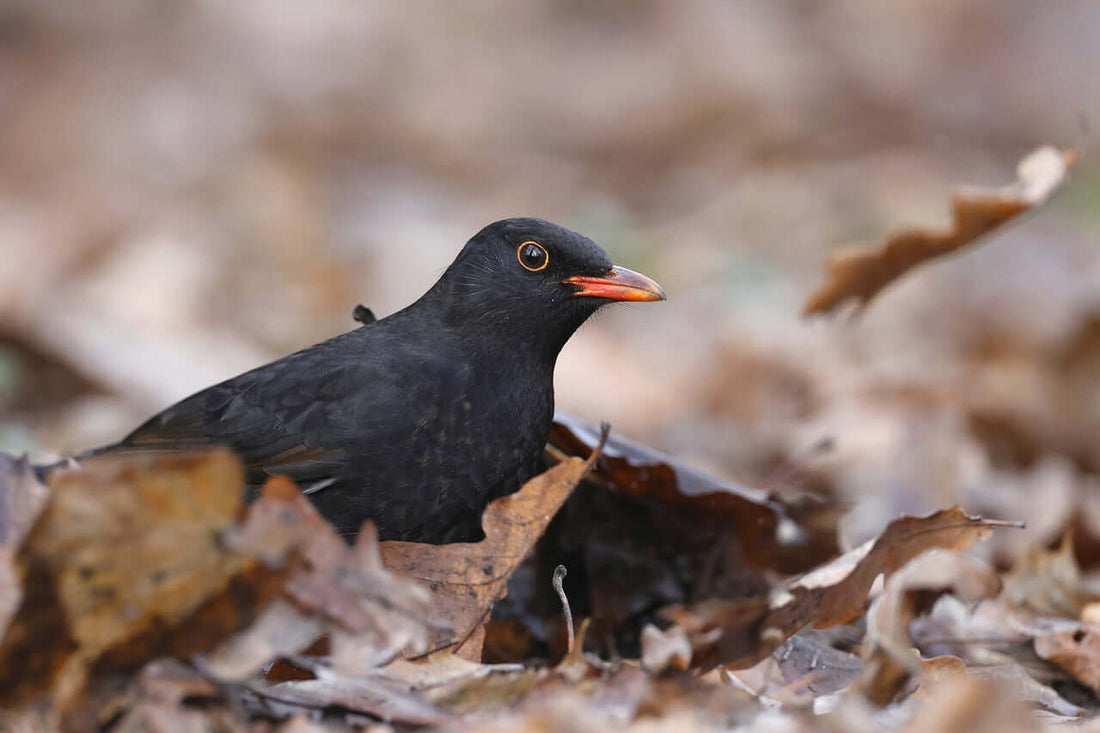
Embracing Autumn's Feathered Friends
Share
As the days grow shorter and a crisp chill fills the air, autumn arrives in the UK, bringing with it a beautiful transformation of colours and a flurry of activity among our feathered friends. One of the most rewarding ways to connect with nature during this season is through autumn garden bird feeding. Let's explore the delights of creating a bird-friendly haven in your outside space.

The Importance of Autumn Feeding:
Autumn is a critical time for our avian companions as they prepare for the colder months ahead. As natural food sources become scarcer, providing supplementary nourishment becomes vital. A well-stocked bird feeder not only supports the local bird population but also offers enthusiasts a front-row seat to the fascinating behaviours and diverse species that frequent their gardens.
Selecting the Right Feeders:
When establishing a bird-friendly environment, choosing the right feeders is key. Tube feeders are excellent for attracting small birds like finches and tits, while platform feeders cater to ground-feeding species such as robins and blackbirds. Suet feeders, filled with energy-rich suet cakes, are particularly beneficial for birds needing extra fuel during the colder months.

Popular Bird Foods:
- Sunflower Seeds: Loved by a wide range of birds, sunflower seeds are a versatile and energy-rich option.
- Niger Seeds: Attracting finches, goldfinches, and siskins, niger seeds are small, oil-rich seeds that pack a nutritional punch.
- Mealworms: An excellent source of protein, mealworms are a favourite among insect-eating birds like robins and blue tits.
- Peanuts: A high-energy snack, peanuts are adored by a variety of birds, including woodpeckers and nuthatches.
- Suet: Suet blocks or balls are perfect for winter as they provide birds with essential fats and calories to endure the colder temperatures.
Bird-Friendly Plants:
Enhance your garden's appeal by planting bird-friendly flora. Berry-producing shrubs such as holly and pyracantha provide natural food sources, while native trees like oak and rowan attract a plethora of bird species. Not only do these plants provide nourishment, but they also create a more vibrant and inviting garden.
Observing Bird Behaviour:
Setting up a cozy spot near your feeders allows for close observation of bird behaviour. Watch as colourful tits flit about, or marvel at the acrobatics of goldfinches on the feeder. Understanding the unique characteristics of each species adds an educational element to the joy of bird watching.
Maintenance and Hygiene:
Regularly clean your feeders and replenish food supplies to ensure the well-being of your feathered visitors. Dirty feeders can harbour harmful bacteria, impacting the health of the birds. Additionally, providing fresh water for drinking and bathing is crucial, especially during dry spells.

Creating an autumn bird-feeding haven in your garden not only supports local wildlife but also provides endless entertainment and connection to the natural world. As you witness the flurry of wings and melodious songs, you'll find that your garden becomes a sanctuary for both you and your feathered guests. So, grab your binoculars, a cozy blanket, and immerse yourself in the beauty of autumn bird feeding.
Written by Angela.
